Tattoos have been around for centuries, serving as a form of self-expression, identity, and cultural significance. One popular theme in tattoo art is death, representing the finality and inevitability of life. While it may seem morbid to some, tattoos meaning death hold deep symbolism and significance for many individuals. In this article with Impeccable Nest, we will explore the history, meaning, and different ways people use tattoos to represent death.
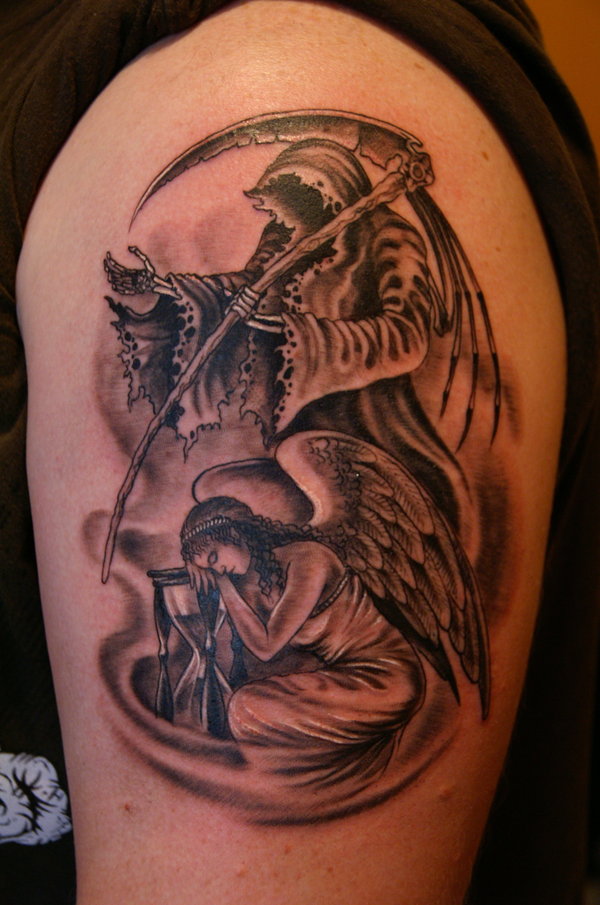
Tattoos Meaning Death: Unveiling the Secrets
There are many reasons someone may decide to get a tattoo relating to death, grief, mortality, or loss. Here are some of the motivations behind these somber designs:
Memorial Tattoos
Tattoos are a popular form of body art that has been around for centuries. They are used to express one’s personality, beliefs, and emotions through permanent ink on the skin. Tattoos often have deep meanings behind them, and one of the most common reasons people get tattoos is to memorialize someone who has passed away.
The death tattoo is a type of memorial tattoo that represents the loss of a loved one. It is a way to keep their memory alive and honor their life. Death tattoos can be very personal and emotional, and they serve as a constant reminder of the person who has passed away.
One of the most popular designs for a death tattoo is the name of the deceased. This is a simple yet powerful way to pay tribute to someone’s life. The name can be written in a variety of fonts and styles, depending on the individual’s preference. Some people may choose to have the name incorporated into a larger design, such as a heart or a cross.
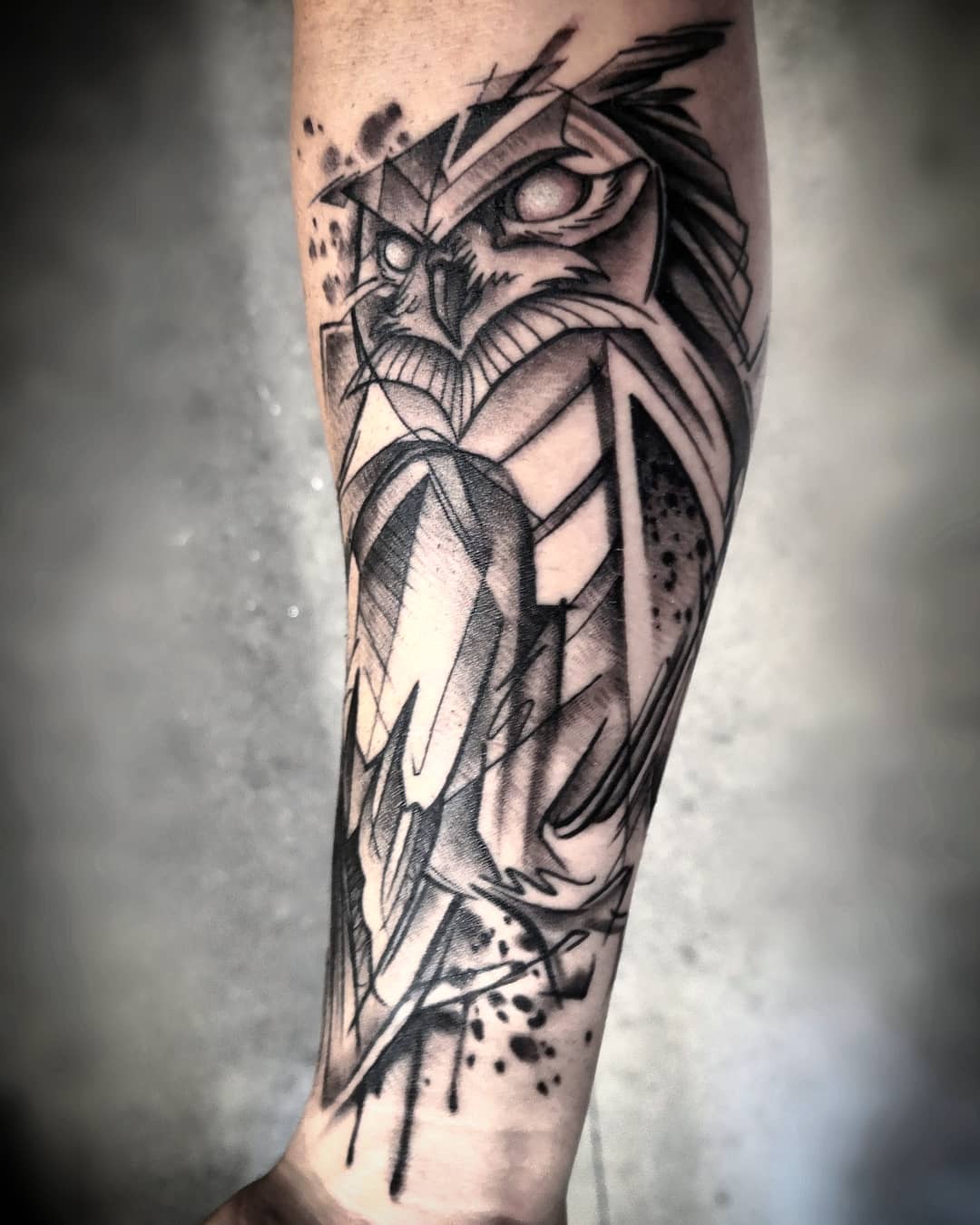
Another common design for a death tattoo is a portrait of the deceased. This is a more detailed and realistic way to memorialize someone’s life. Portraits can be done in black and white or full color, and they can be very lifelike. The artist will work closely with the client to ensure that the portrait accurately captures the person’s likeness.
Birth and death dates are also commonly included in a death tattoo. These dates can be written in numerals or spelled out, and they help to establish a timeline of the person’s life. Birth and death dates can be placed alongside other designs, such as flowers or symbols, to create a more meaningful tattoo.
Symbolic images are often used in death tattoos as well. Roses represent love and beauty, while angels symbolize protection and guidance. Crosses and wings are also popular choices, as they are associated with spirituality and the afterlife. These symbols can be incorporated into a larger design or used on their own to create a powerful statement.
Quotes about grief, loss, or the afterlife are another way to express the emotions surrounding a death tattoo. These quotes can be meaningful and inspirational, providing comfort to the wearer as they mourn their loss. Quotes can be written in a variety of fonts and styles, and they can be placed alongside other designs to create a cohesive memorial tattoo.
In conclusion, death tattoos are a popular way to memorialize a loved one who has passed away. They serve as a constant reminder of the person’s life and provide an outlet for mourning and remembrance. Whether it is a name, portrait, dates, or symbolic image, a death tattoo is a personal and emotional expression of love and loss.
Processing Trauma or Loss
Tattoos have been a part of human culture for centuries, serving as a form of self-expression and art. However, the symbolism behind tattoos has evolved over time, with one of the most prominent being death tattoos. These tattoos hold deep meaning for those who have lost loved ones or experienced traumatic events involving death.
While some people opt for memorial tattoos to commemorate their loved ones who have passed away, others choose tattoos to cope with the emotional aftermath of trauma involving death. For instance, those who have experienced a miscarriage, stillbirth, or abortion may get inkings to honor the loss of their unborn child and find solace in the permanence of the tattoo.
Furthermore, individuals who have survived tragic accidents or violent crimes may also use tattoos to mark the anniversary of the event. The tattoo serves as a reminder of the past while also symbolizing resilience and strength to move forward. It can act as a physical representation of their triumph over adversity and a source of comfort during difficult times.

The symbolism behind death tattoos can vary from person to person, depending on their experiences and beliefs. Some individuals may choose to incorporate specific imagery, such as a skull or a grim reaper, to represent death. Others may opt for more personal symbols that hold meaning to them, such as a favorite flower or animal that represents their loved one.
Ultimately, death tattoos are a way for individuals to transform painful experiences into meaningful symbols of resilience. They serve as a reminder of the past while also providing comfort and hope for the future. While they may not take away the pain of loss or trauma, they can be a powerful tool for healing and moving forward.
Acceptance of Mortality
Tattoos have been a way for people to express themselves and their beliefs for centuries. While tattoos can hold many meanings, some people choose to use them to represent their thoughts on death. These tattoos are often viewed as reminders of human mortality and the impermanence of life.
One common symbol used in death tattoos is the hourglass. The hourglass represents the passage of time, with the sand running out representing the end of life. This symbol serves as a reminder that our time on this earth is limited and that we must make the most of each moment we have.
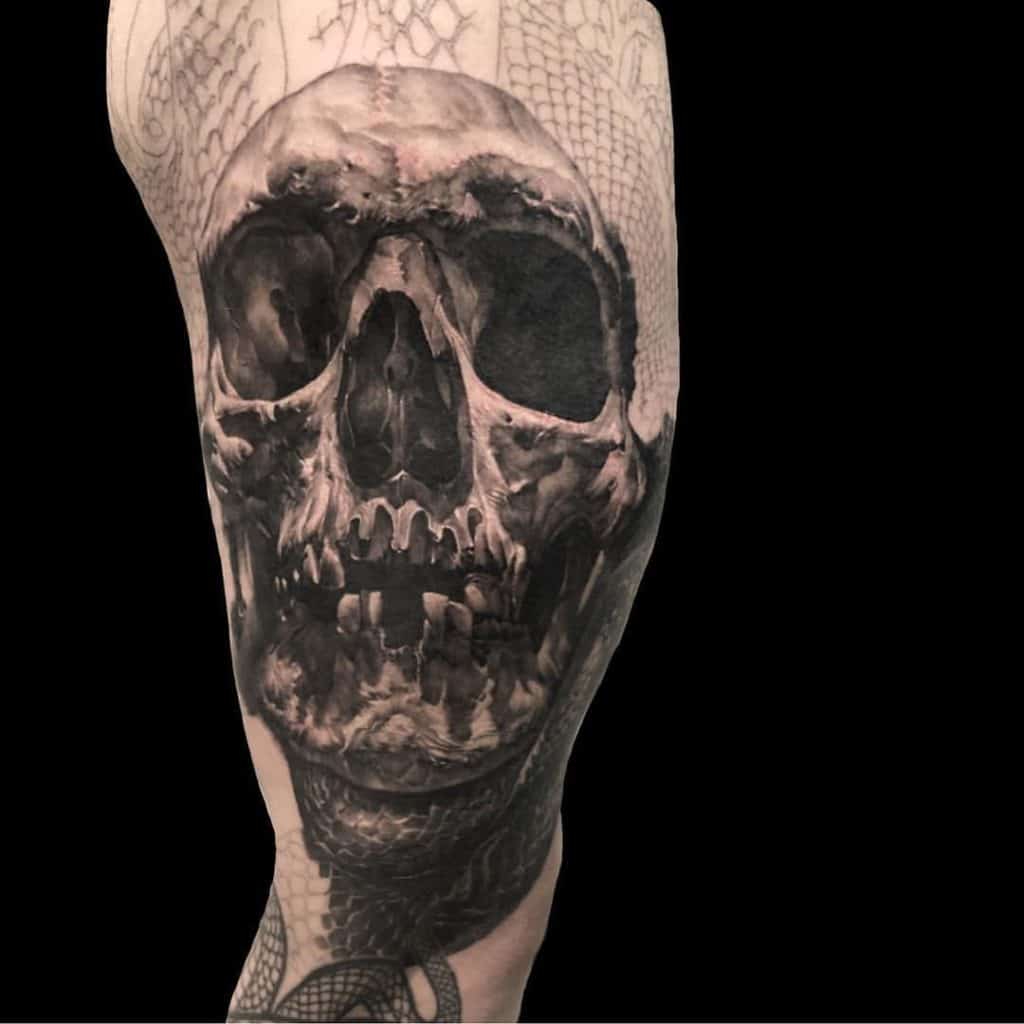
Another popular symbol for death tattoos is the skull. The skull has long been associated with death and is often used in artwork and symbolism to represent the end of life. Some people choose to get a skull tattoo as a reminder that all things must come to an end.
The Grim Reaper is another symbol often used in death tattoos. The Grim Reaper is personified Death, who is often depicted as a skeletal figure holding a scythe. This symbol represents the idea that death comes for us all, regardless of age, gender, or social status.
While death tattoos may seem morbid to some, they are often chosen by those who find comfort in accepting death’s inevitability. These memento mori tattoos encourage mindfulness and gratitude for each day we are given. By acknowledging our own mortality, we can learn to live more fully and appreciate the time we have with loved ones.
In conclusion, tattoos meaning death can hold deep personal meanings for those who use them. Symbols like hourglasses, skulls, the Grim Reaper, and inscriptions like Memento Mori can serve as reminders of our own mortality and encourage us to live fully in the present moment. While death is inevitable, these tattoos can help us embrace it and find peace in the knowledge that we have lived our lives to the fullest.
Rebellion or Nonconformity
Tattoos have been used as forms of expression for centuries and carry various meanings, ranging from personal beliefs, cultural ideologies, or even societal norms. One of the themes that are popularly depicted in tattoos is death. The concept of death has been viewed differently across cultures and communities worldwide, with some seeing it as a natural end to life, while others perceive it as a taboo topic shrouded in mystery and fear.
In subcultures such as punk, goth, and heavy metal, death tattoos hold a unique place in terms of their symbolism and significance. These communities often embrace unconventional and rebellious lifestyles that challenge mainstream values and beliefs. Thus, for them, tattoos that depict death and its related motifs such as skulls, skeletons, or macabre imagery can convey an edgy or nonconformist attitude.
The Grim Reaper, a cloaked figure wielding a scythe, is a common sight in death tattoos. This iconic symbol represents death’s power over life and the inevitability of mortality. As such, Grim Reaper tattoos often evoke a sense of fatalism, reminding the wearer and onlookers of the fleeting nature of existence. For those belonging to these subcultures, such tattoos can serve as reminders that they live life on their terms and are not afraid to confront the inevitable.
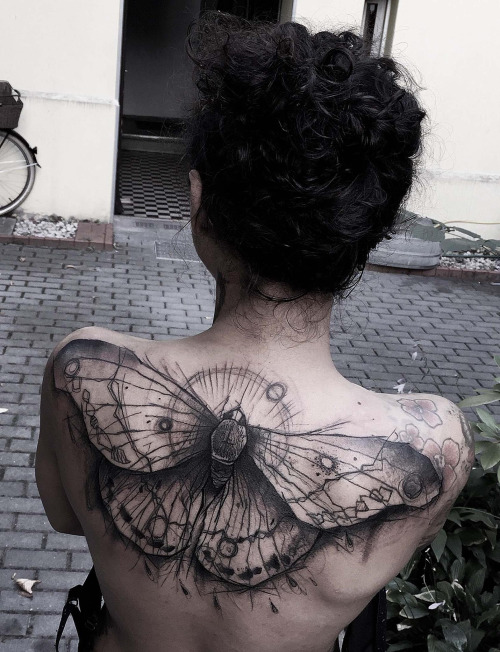
Additionally, occult symbols such as pentagrams, inverted crosses, or demons are also prevalent in death tattoos. Such imagery may be viewed as rebellious, as it goes against traditional religious or cultural norms. It can also signify a fascination with the darker aspects of life and the supernatural. For instance, a person with a tattoo of a demon might be conveying a sense of empowerment or control over their fears or inner demons.
Morbid tattoos, including those that depict death, offer a visual representation of subcultural identities. They allow individuals to express their individuality and differentiate themselves from mainstream culture. In these subcultures, tattoos are often seen as a form of rebellion and rejection of the expected norms. By getting a death-related tattoo, they signal their defiance, independence, and nonconformity.
In conclusion, death tattoos hold a unique place in subcultures such as punk, goth, and heavy metal. They represent rebellion, individuality, and nonconformity, and offer a visual representation of alternative lifestyles that challenge traditional values and beliefs. While death tattoos may be viewed as morbid or taboo by some, for those belonging to these communities, they serve as powerful symbols of identity and self-expression.
Artistic Motivations
Tattoos have been around for thousands of years, and throughout history, they have served as a form of self-expression. Tattoos can hold personal significance, commemorate important events or achievements, or simply be aesthetically pleasing. However, one particular theme that has gained popularity in recent years is tattoos symbolizing death.
For many people, getting a death tattoo is a way to honor the deceased and remember loved ones who have passed away. A tattoo of a loved one’s name or image can serve as a permanent reminder of their impact on your life. Other symbols commonly associated with death, such as skulls or crossbones, may represent the inevitability of death and the fleeting nature of life.
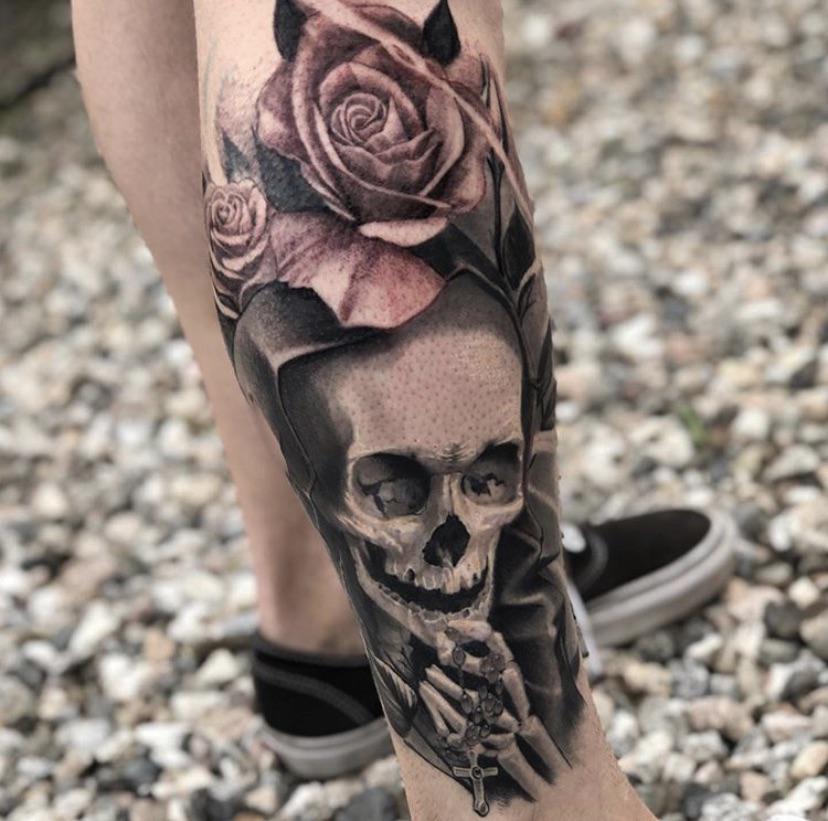
Apart from their deeper personal meaning, some people choose to get death tattoos simply for their striking visual impact. Dark motifs like ravens, coffins, and wilted roses provide an opportunity for beautiful, macabre artistry. These designs can be highly intricate and visually stunning, making them popular among tattoo collectors and enthusiasts.
While many death tattoos are chosen for their symbolic value, some are purely aesthetic. Some people simply enjoy the look of ominous designs and gravitate towards dark imagery regardless of its meaning. In these cases, the tattoo serves as a statement piece and a form of self-expression rather than a tribute to death or loss.
It’s important to note that death tattoos aren’t for everyone, and some people may find them unsettling or inappropriate. Additionally, it’s crucial to carefully consider the potential implications of a death tattoo before getting inked. While tattoos are generally becoming more accepted in society, certain professions or communities may still stigmatize visible tattoos, especially those with darker themes.
In conclusion, death tattoos can hold a range of meanings, from honoring the deceased to celebrating the beauty of the macabre. Whether chosen for their symbolic value or purely aesthetic appeal, these tattoos can make a powerful statement and serve as a form of self-expression. However, it’s important to carefully consider the potential implications and ensure that a death tattoo is the right choice for you before getting inked.
Common Death Tattoo Motifs and Meanings
Death tattoos employ a rich symbolic vocabulary of words, figures, and other motifs. Here are some of the most prevalent themes and their significance:
Skulls
Human skulls are one of the most iconic death symbols, conveying the inevitability of mortality. Skull tattoos remind us of our own impermanence while also representing a life once lived. Sugar skulls based on Dia de los Muertos (Day of the Dead) celebrations have a more festive, celebratory meaning.
Grim Reaper
The robed, scythe-wielding figure of Death personified. This ominous harbinger symbolizes death’s constant presence, often meant as a memento mori warning to make the most of life.
Crows Ravens
These jet-black carrion birds are long associated with death and the underworld. Edgar Allan Poe’s famous poem “The Raven” linked ravens with mourning and loss. Ravens or crows can memorialize someone’s passing or represent a Gothic worldview.
Coffins
Coffins clearly invoke death and mortality, though some get coffin tattoos as a symbol of overcoming or surviving a harrowing experience. Coffin designs may be embellished with roses, crosses, or inscriptions as memorial pieces.
Timepieces
The passage of time is directly connected to human mortality. Pocket watches, hourglasses, sundials, and clocks remind us that our time is fleeting. Some incorporate these images with wings or the inscription “tempus fugit” meaning “time flies.”
Cultural Associations
In addition to personal meaning, death tattoos draw on symbolism from various spiritual traditions and folklore:
- Gothic Art: Gothic horror motifs like vampires, bats, and cemeteries became tattoo tropes thanks to the Gothic cultural movement.
- Day of the Dead: Brightly-colored sugar skulls and marigolds reference Mexico’s Dia de los Muertos festivities, celebrating deceased ancestors.
- Christianity: Christian death tattoos feature crosses, angels, saints, and Bible verses regarding the afterlife. Psalms and prayers evoke faith in resurrection.
- Ancient Egypt: Pyramids, ankhs, pharaohs, and the Eye of Horus symbolize Egyptians’ focus on the afterlife and belief in immortality.
- Norse Mythology: Norse death motifs include Valhalla, the mythic hall of fallen warriors, as well as images of Odin and the Valkyries who usher heroes to the afterlife.
Meaningful Placement for Death Tattoos
Along with the design itself, body placement can impact a tattoo’s significance. Areas closely associated with life or loss are often chosen to enhance death tattoos:
- Over the heart – Memorial pieces for lost loved ones, evoking deep love or grief.
- Wrists – Coffins, crosses, or dates marking a suicide attempt. Can represent survival.
- Shoulders – Angel wings spanning the shoulder blades, symbolizing a lost soul being guided to heaven.
- Forearms – Skulls, hourglasses, or flowers encircling the arm as constant memento mori reminders.
- Behind the ear – Names or dates commemorating someone who will always be “in mind.”
- Fingers – Ring tattoos memorializing a spouse or religious tattoos representing eternity.
- Ribcage – Hearts, roses, or “In Loving Memory” designs over the physical heart.
- Back of neck – Grim reapers or animal skulls signifying danger or defiance.
Conclusion
Death tattoos provide a potent means of commemorating loss, processing grief, accepting mortality, and artistically exploring macabre themes. When thoughtfully designed and positioned, they transform the body into a memorial site full of personal significance. However, it’s important to carefully consider cultural contexts as well as potential future regret before permanently inking death symbols onto the body. For many wearers though, death tattoos become cherished keepsakes and sources of solace, keeping loved ones forever close.

I am Harvey Berry, a tattoo enthusiast who has immersed himself in the diverse world of ink, passionately exploring the beauty and artistry within each tattoo. My mission extends beyond uncovering the aesthetics of tattooing; it involves sharing in-depth knowledge across all aspects of this art form.
Fueled by genuine curiosity and love for every facet of tattooing, I have diligently crafted well-researched articles, with a special focus on the Tattoo Meaning of Impeccable Nest section. Here, my aim is to help the tattoo community gain a deeper understanding of the meanings and values embedded in each tattoo.
One of my primary goals is to encourage responsible decision-making when it comes to getting inked. I recognize that choosing to get a tattoo is a significant personal decision that requires careful consideration. Hence, I provide diverse resources covering the meaning of tattoos, the tattooing process, aftercare tips, and other valuable information.
Whether you are a seasoned tattoo enthusiast or embarking on your first exploration of the world of body art, I aspire to be a reliable resource for you at every step of your journey. I hope that my extensive knowledge of tattoos, especially in the Tattoo Meaning section, will assist you in finding inspiration to express yourself through the art of tattoos.
